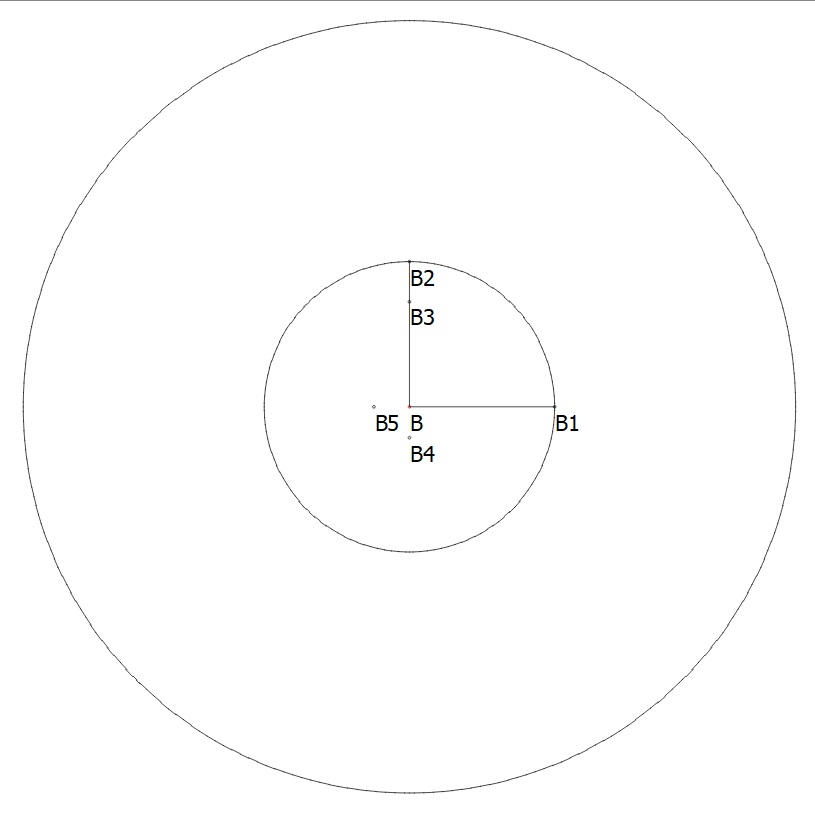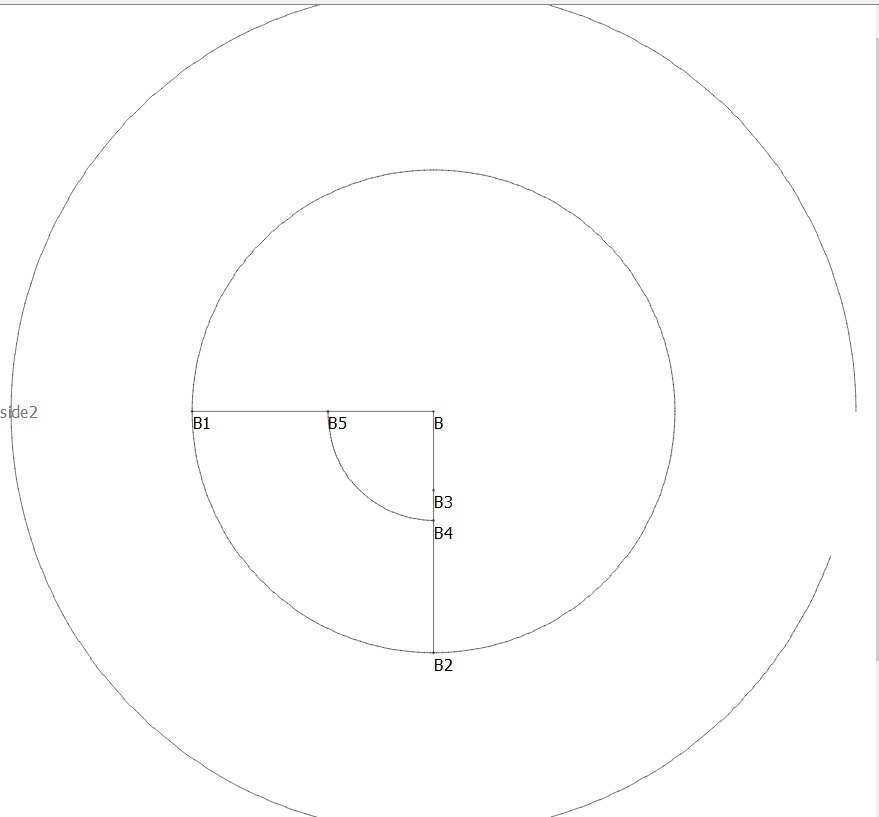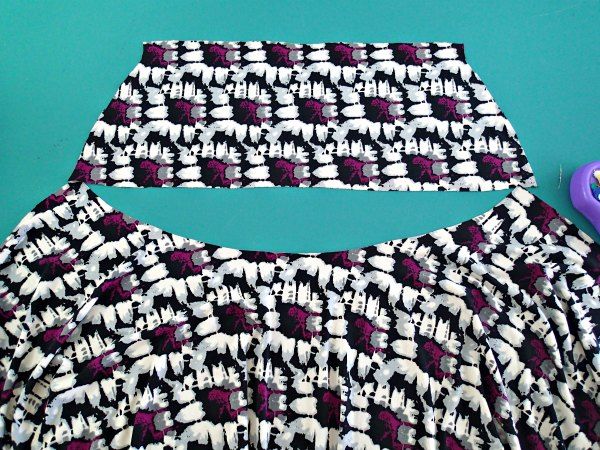Hi @alexandria_tale, Here is an example of a circle skirt which is fitted at the waist:
This circle skirt has a larger initial waist circumference, which results in a larger circumference for abdomen and hips. This is a good approach for someone who is an XXXL, with a large upper abdomen and large hips. The enlarged waist must be taken in with darts.
The waistline has wearing ease equivalent to adding 1" to a 24" waist–> (1/24) = 0.042
(waist_circ * 1.042)
It also has 20% extra to accommodate the client’s body shape:
(waist_circ * 1.042) + (waist_circ * 1.2) = (waist_circ * 1.242)
Convert this to use the front measurements and back measurements waist_arc_f and waist_arc_b. Especially with persons who are in the larger sizes, the front waist is not the same as the back waist. Substituting waist_circ with 2*waist_arc_f, the circumference or diameter formula becomes:
(waist_circ * 1.242) = ( ( 2 * waist_arc_f ) * 1.245 )
Plugging this into ( d = 2 * r * _pi ) and solving for r:
r = ( (waist_arc_f * 1.245) / (_pi) )
The waistline begins at r away from point A.
Use Point from distance and Angle. Origin = A, Length = (( waist_arc_f * 1.245 ) / _pi ), Angle = 270
Create A2 using this length, and points A3 and A4 exactly the same as for the regular circle skirt.
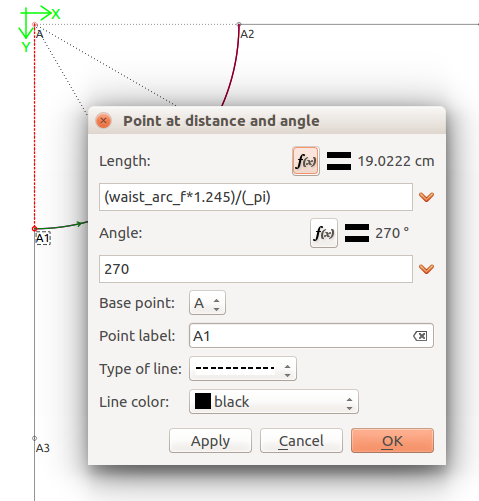
Create the dart centers:
Points A7 & A8 are created with Point Intersect Curve and Axis, at angles 300 & 330.
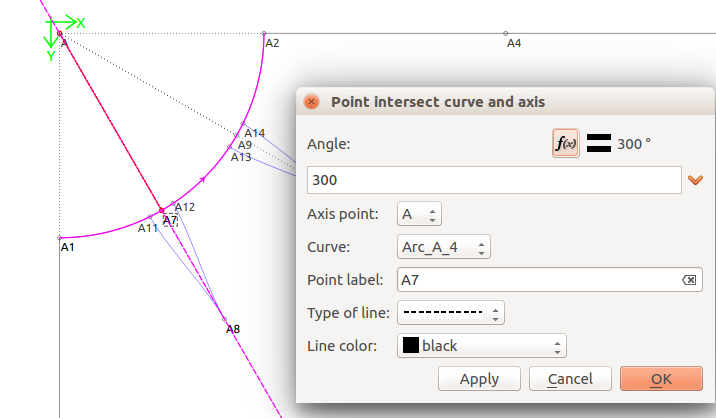
Create the dart sides:
The darts are created using the sub-arcs which were created by A7 & A9 along arc Arc_A_4.
The excess amount at the waistline is 20%, or 0.20. ( 0.20 / 4 ) = 0.05.
Points A11, A12, A13, and A14 are ( waist_arc_f * 0.05 ) away from A7 and A9 along Arc_A_4.
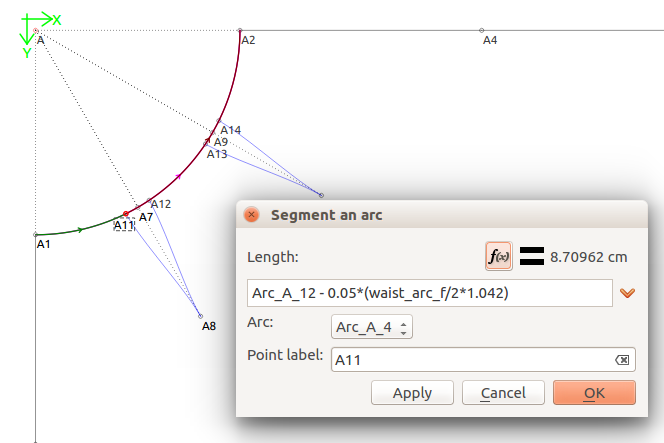
Create the dart points:
Points A8 an A10 are created using the Point along Line tool, using Line_A_A7 and Line_A_A9. They are about 2/3rds, or 0.6 of waist_to_hip_f which was used to create A3, so Length = 0.6 * Line_A1_A3.

Create the dart legs:
The curved darts are created using the Simple Curve tool:
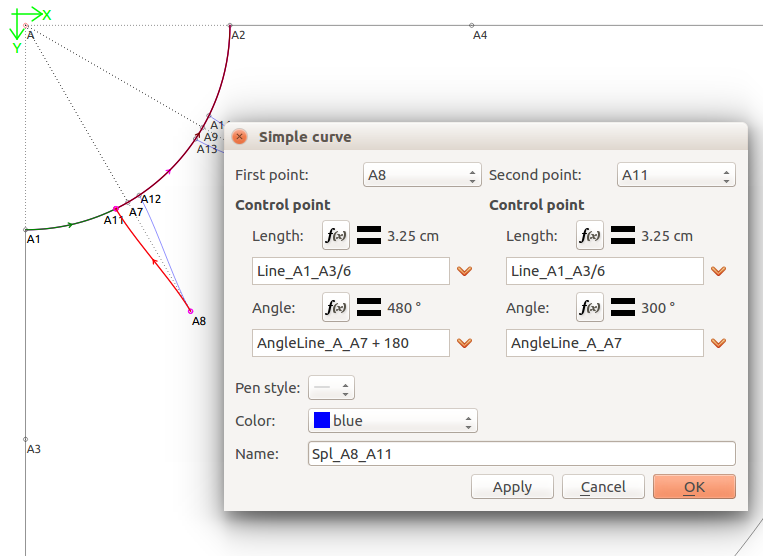
Repeat the above instructions to create the back draft. Then flip vertically. You will have two pattern pieces, sew them with side seams.
 and placed them in my file. I don’t want to forget this one.
and placed them in my file. I don’t want to forget this one.
 The skirt with two radii works well on a cylinder or cone, but not if you have curves because the seam will be uneven.
The skirt with two radii works well on a cylinder or cone, but not if you have curves because the seam will be uneven.